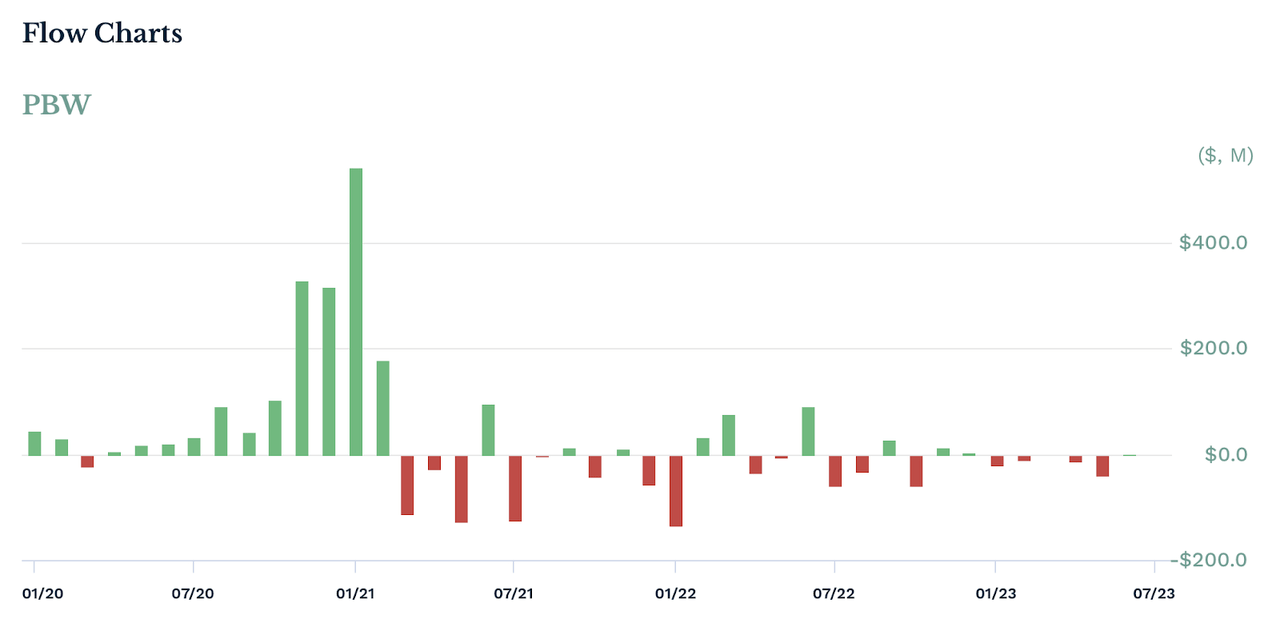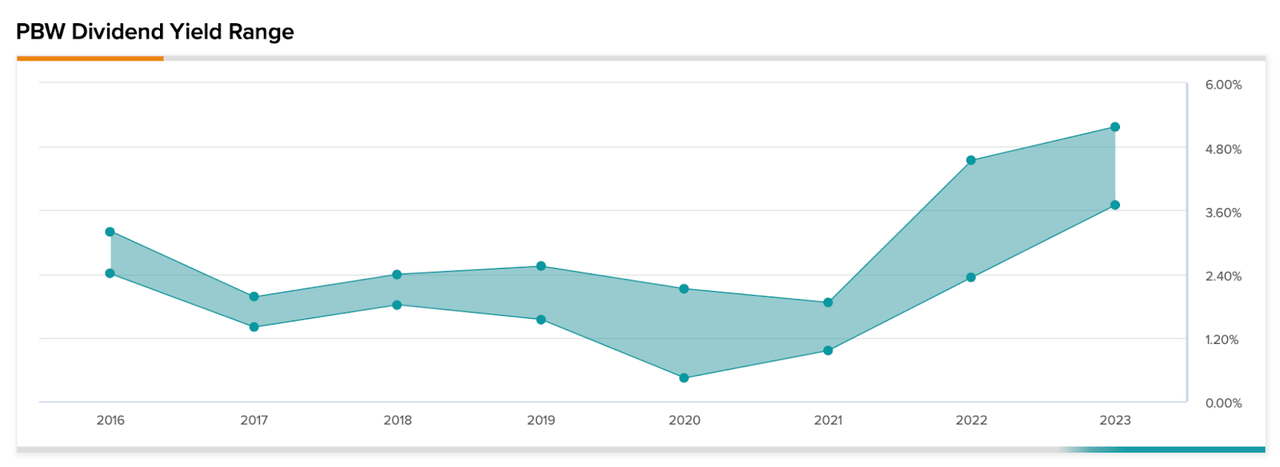PBW: Winning The Green Jackpot?

Summary
- The Invesco WilderHill Clean Energy ETF tracks the Wilderhill Clean Energy index, focusing on companies developing renewable energy technologies and services.
- PBW has underperformed the broad market and has a high volatility with a Beta of 1.5, indicating a higher risk compared to the average ETF.
- The article concludes with a bearish view on PBW due to its exposure to small, growth-oriented stocks with unproven technologies and weak economic foundations.
Justin Paget
Climate transition continues to be a dominant topic in the financial markets amidst the rising interest rates environment. However, the inflow of clean energy funds such as NYSEARCA:PBW (Invesco WilderHill Clean Energy ETF) has not gained much traction lately, with net positive flows mostly concentrated in the pre-pandemic era. This article will provide an overview into ETF with comprehensive returns and risk analysis, aiming to educate any potential investor in PBW.
The primary objective of PBW is to track the WilderHill Clean Energy index. The index generally selects companies focusing on “technologies for greener, renewable energy, including those developing and selling energy technologies and energy management services designed to address efficiency and environmental challenges as well as changes in fossil fuel resource abundance”. As of the start of Q3 2023, it has roughly 16% weight in renewable energy harvesting, 27% in energy storage, 23% in power delivery & construction, 23% in energy conversion, and 10% in greener utilities. These weights are merely a result of equal-weighted methodologies, where smaller cap stocks get 0.5% weight capped. As a result, PBW is mostly composed of stocks in the technology and industrials sectors, where energy transition solutions are pioneered.
Author, Yahoo Finance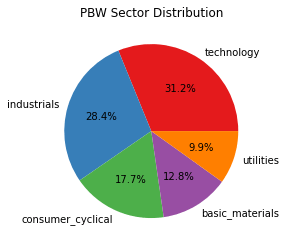
With the index’s modified equal dollar weighting methodology, PBW top 10 holdings is only roughly 20% of the index, which is considered fairly diversified.
Author, Yahoo Finance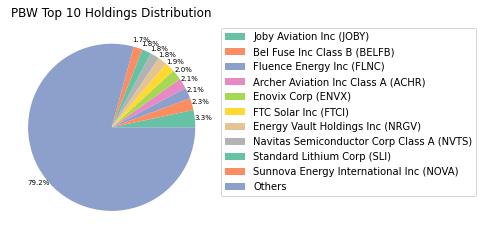
Performance Review
Year-to-date, PBW has underperformed the broad market (SPY, IWO) but outperformed its peers (ICLN, XLE) which also focus on the energy/ clean energy investment universe. This may be due to PBW greater exposure to long growth and small cap factors, where ICLN and XLE are mostly dominated by value and large cap stocks.
Author, Yahoo Finance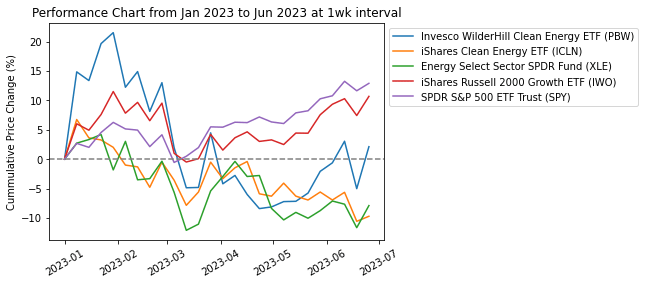
However, since January 2022, PBW has performed poorly with a cumulative return of -40%, underperforming all other indices by significant margins. Macroeconomic pressure, especially driven by rising interest rates and borrowing costs, has major impacts on the valuation of growth-oriented stocks within PBW and their short to medium term growth prospects.
Author, Yahoo Finance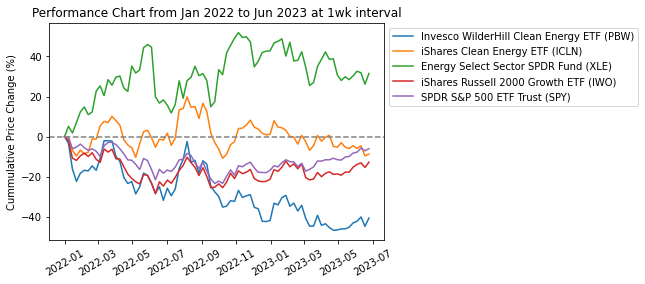
Risk Analytics
Meanwhile, PBW is a highly volatile ETF with ~40% annualized volatility. This can be visualized from the chart below, where PBW is currently trading above its rolling mean and reaching +1 standard deviation.
Author, Yahoo Finance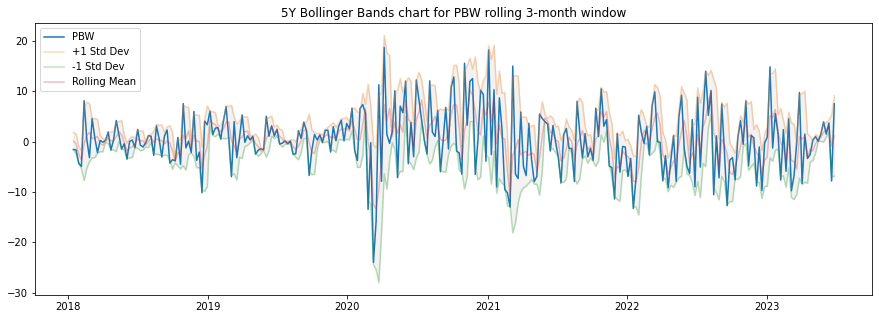
Relative to a broad index such as SPY, PBW now sits at a Beta of 1.5 (where SPY moves by 1, PBW moves by 1.5). Compared to its historical average, its sensitivity to broad market movements has reduced greatly to a more stabilized zone, despite still being higher than an average ETF.
Author, Yahoo Finance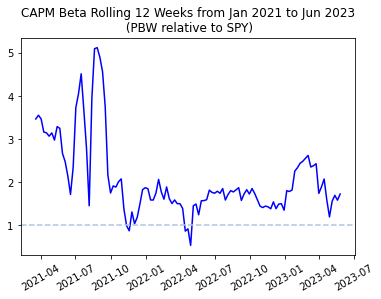
Fundamental Deep Dives
Most of PBW current top holdings are trending stocks with breakthrough technologies, where business has yet to be supported by strong fundamentals. For example, JOBY is a pioneer in electric aerial ridesharing and the FAA has recently certified its first production prototype, which drove its share price up twofold over the month.
Author, Yahoo Finance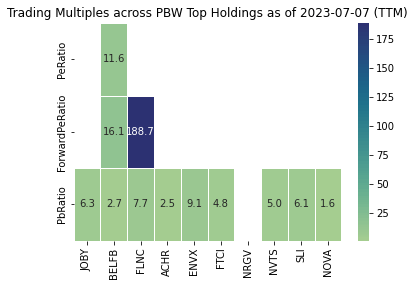
Looking across their profitability metrics, it does not look great as only BELFB, which is a mature designer and manufacturer of electronics products, has positive return on assets and equity. Many are still developing technologically and economically feasible products, where potential upside (or downside) cannot be captured using such metrics.
Author, Yahoo Finance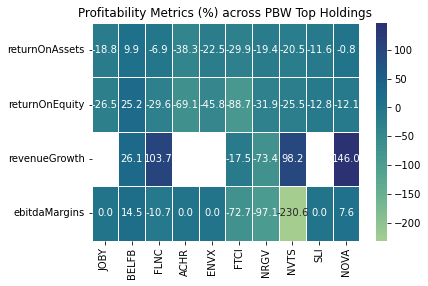
These companies also do not have large debt funding, and seem healthy from the liquidity standpoint.
Author, Yahoo Finance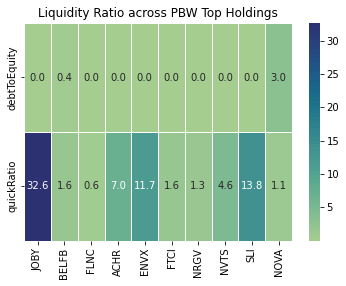
With that said, PBW pays a high dividend to investors as compared to many of its peers, such as ICLN at only 0.9% annually. With price appreciation/ movements likely to play a much more significant part in its total return, this could only serve as an additional incentive for investors to buy.
Conclusion
I am bearish on PBW given its diversified exposures to many small, growth-oriented stocks where products are yet to be proven technologically and business is yet to establish with sound economics. While only several successes would have driven up the performance of PBW (like how a VC works), the ETF has a tight 4% market weight cap to all stocks - which means that any large idiosyncratic appreciation can hardly be captured in PBW anyway. One may argue that high turnover of PBW may allow the ETF to capture potential upside of rising firms; the ETF is perhaps not an effective vehicle to do so, as it would only capture stocks that have ‘risen’ to a larger cap. As most of these companies would likely fail to mature over time, PBW is perhaps doomed to fail over the long-term.
This article was written by
Analyst’s Disclosure: I/we have no stock, option or similar derivative position in any of the companies mentioned, and no plans to initiate any such positions within the next 72 hours. I wrote this article myself, and it expresses my own opinions. I am not receiving compensation for it (other than from Seeking Alpha). I have no business relationship with any company whose stock is mentioned in this article.
Seeking Alpha's Disclosure: Past performance is no guarantee of future results. No recommendation or advice is being given as to whether any investment is suitable for a particular investor. Any views or opinions expressed above may not reflect those of Seeking Alpha as a whole. Seeking Alpha is not a licensed securities dealer, broker or US investment adviser or investment bank. Our analysts are third party authors that include both professional investors and individual investors who may not be licensed or certified by any institute or regulatory body.
